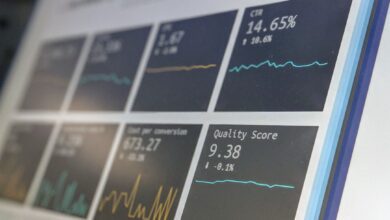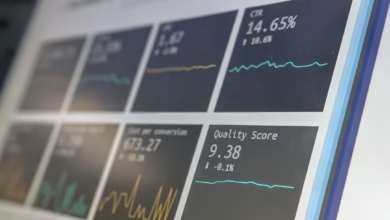Navigating Day Trading: Essential Strategies, Insights, and Tools for Beginners

Day trading can be an exhilarating venture, offering the potential for significant profits in short time frames. However, it also comes with its fair share of risks and challenges, particularly for beginners. This article serves as a comprehensive guide designed to equip novice traders with essential strategies and insights needed to navigate the fast-paced world of day trading. We will explore foundational day trading strategies, emphasizing the importance of technical analysis and the influence of market news on price movements. Additionally, we will delve into critical risk management techniques that help mitigate losses, the psychological aspects that can impact decision-making, and the rise of algorithmic trading in reshaping the landscape. Finally, we will highlight effective swing trading strategies and introduce the tools and platforms that can enhance your trading experience. Whether you are just starting your trading journey or looking to refine your skills, this guide will provide the knowledge necessary to approach the market with confidence.
- 1. **Getting Started: Essential Day Trading Strategies for Beginners**
- 2. **Mastering the Market: The Role of Technical Analysis and News in Trading**
- 3. **Mind Over Market: Understanding Psychology and Risk Management in Trading**
1. **Getting Started: Essential Day Trading Strategies for Beginners**
Getting started in day trading can be both exciting and intimidating for beginners. The key is to develop a solid foundation of strategies that can guide your trading decisions and help you navigate the fast-paced market environment.
First, beginners should focus on understanding the basics of technical analysis. This involves studying price charts, identifying trends, and recognizing key patterns that can indicate potential price movements. Tools such as moving averages, relative strength index (RSI), and candlestick patterns are invaluable for making informed trading choices.
Next, it’s crucial to establish a clear trading plan. This plan should outline your financial goals, risk tolerance, and specific criteria for entering and exiting trades. A well-defined plan helps eliminate emotional decision-making, which can lead to impulsive trades and increased losses.
Another essential strategy is to start small. Beginners should begin with a limited amount of capital to minimize potential losses while gaining experience. This approach allows traders to learn from their successes and mistakes without risking significant amounts of money.
Additionally, practicing with a demo account can be beneficial. Many trading platforms offer simulated trading environments where beginners can execute trades without financial risk. This practice helps build confidence and familiarity with the trading platform, as well as the nuances of executing trades.
Finally, staying informed about market news and economic indicators is vital. Events such as earnings reports, economic data releases, and geopolitical developments can significantly impact market movements. By monitoring these factors, traders can make more astute decisions and better anticipate price changes.
In summary, beginners in day trading should focus on technical analysis, develop a solid trading plan, start small, practice with a demo account, and stay informed about market news. By adhering to these strategies, newcomers can build a strong foundation for a successful day trading career.
2. **Mastering the Market: The Role of Technical Analysis and News in Trading**
Technical analysis and news play pivotal roles in shaping trading strategies, particularly for day traders and swing traders. Mastering these elements can significantly enhance a trader’s ability to predict market movements and make informed decisions.
Technical analysis involves analyzing historical price data and trading volumes to identify patterns and trends. Traders utilize various tools, such as charts, indicators, and oscillators, to assess potential future price movements. Common indicators include moving averages, Relative Strength Index (RSI), and Bollinger Bands, each providing insights into market momentum, overbought or oversold conditions, and potential reversal points. By understanding these technical signals, traders can develop strategies that align with market behavior, allowing them to enter and exit trades at optimal times.
However, technical analysis is not conducted in a vacuum; it must be complemented by an awareness of current events and market sentiment. News releases—such as earnings reports, economic data, and geopolitical developments—can create volatility and dramatically influence price movements. For instance, a favorable earnings report may lead to a sharp rise in a stock’s price, while unexpected economic indicators can trigger sell-offs. Traders who stay informed about relevant news can better anticipate these shifts and adjust their strategies accordingly.
Integrating technical analysis with news awareness creates a more robust trading approach. For example, a trader may identify a bullish pattern through technical analysis but should also consider any upcoming news that could impact the stock. This dual focus helps manage risk and improve decision-making, allowing traders to capitalize on opportunities while mitigating potential losses.
In summary, mastering the market requires a solid understanding of both technical analysis and the impact of news events. By combining these two components, traders can enhance their predictive capabilities, leading to more successful trading outcomes.
3. **Mind Over Market: Understanding Psychology and Risk Management in Trading**
In the realm of trading, the interplay between psychology and risk management is crucial for success. Understanding the psychological aspects of trading can significantly influence decision-making processes, helping traders navigate the emotional highs and lows that accompany market fluctuations.
Traders often experience a range of emotions, including fear, greed, and overconfidence. Fear can lead to premature selling, while greed may encourage taking excessive risks. Overconfidence might result in underestimating potential losses, prompting traders to hold onto losing positions longer than necessary. Recognizing these emotional triggers is the first step in developing a more disciplined trading approach.
Effective risk management strategies are essential to mitigate the impact of psychological factors. Setting clear risk parameters—such as defining the maximum loss per trade, using stop-loss orders, and diversifying one’s portfolio—can help traders maintain a level-headed approach during volatile market conditions. By adhering to a well-structured risk management plan, traders can reduce the likelihood of emotional decision-making and ensure that their strategies remain aligned with their overall trading goals.
Moreover, maintaining a trading journal can be an invaluable tool for self-reflection. Documenting trades, emotions experienced, and the reasoning behind decisions allows traders to identify patterns in their behavior over time. This practice fosters self-awareness, enabling them to make more informed choices and manage their emotions effectively.
In conclusion, mastering the psychological aspects of trading, combined with robust risk management techniques, creates a solid foundation for long-term success. By prioritizing mental discipline and strategic planning, traders can navigate the complexities of the market with greater confidence and resilience.
In conclusion, embarking on a journey into day trading can be both exciting and challenging for beginners. By understanding essential strategies and mastering the intricacies of technical analysis, traders can better predict market movements and make informed decisions. Equally important is the implementation of effective risk management techniques, which serve as a safety net against potential losses. Moreover, recognizing the psychological aspects of trading helps individuals navigate the emotional highs and lows that can impact their decision-making.
As the landscape of trading evolves, algorithmic trading and automation are increasingly shaping the market, providing new opportunities for efficiency and precision. Additionally, swing trading strategies can offer a complementary approach for those looking to capitalize on short-term trends. Finally, staying attuned to news and events is crucial, as they can significantly influence intraday trading dynamics.
With the right tools and platforms at their disposal, beginners can equip themselves for success in the fast-paced world of day trading. By combining knowledge, discipline, and the right mindset, aspiring traders can navigate this complex environment and work towards their financial goals. Whether you’re just starting or looking to refine your skills, continuous learning and adaptation will be key to thriving in the ever-changing market landscape.





